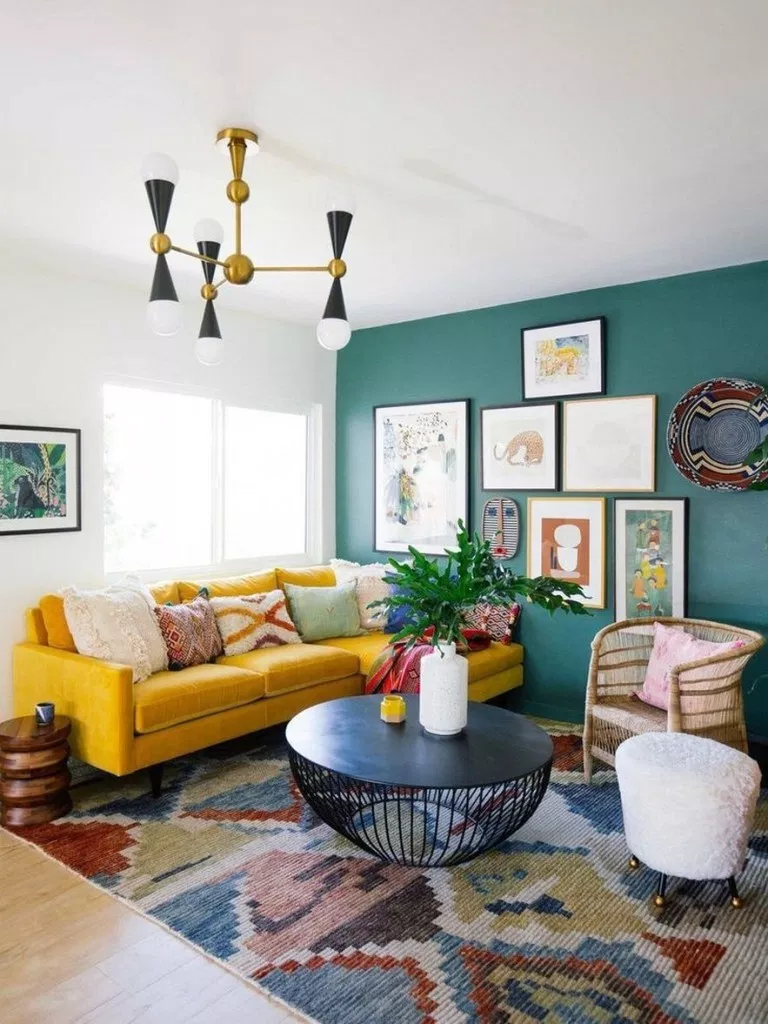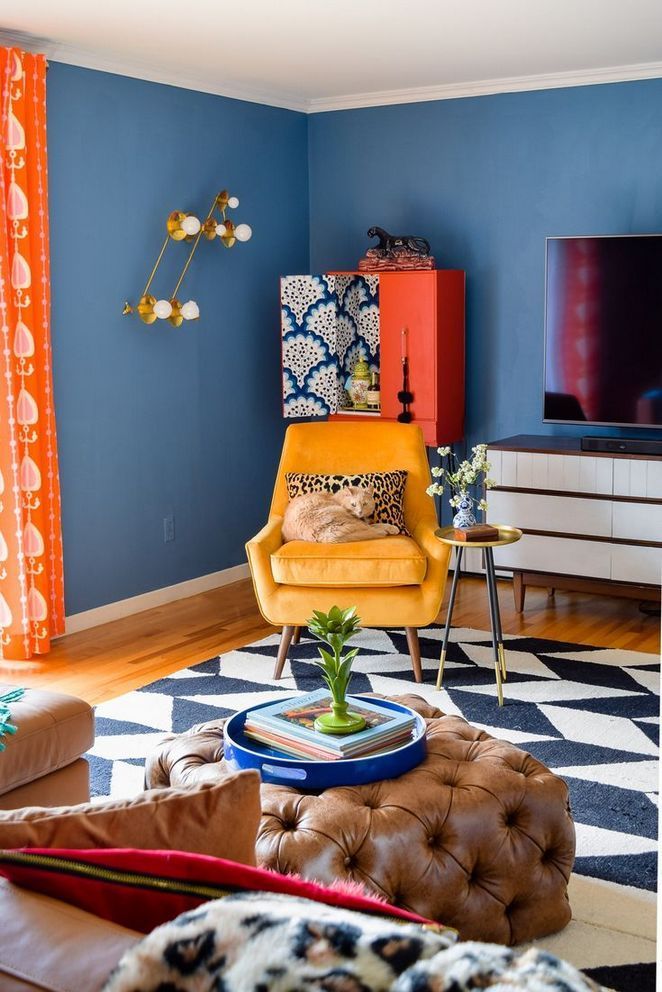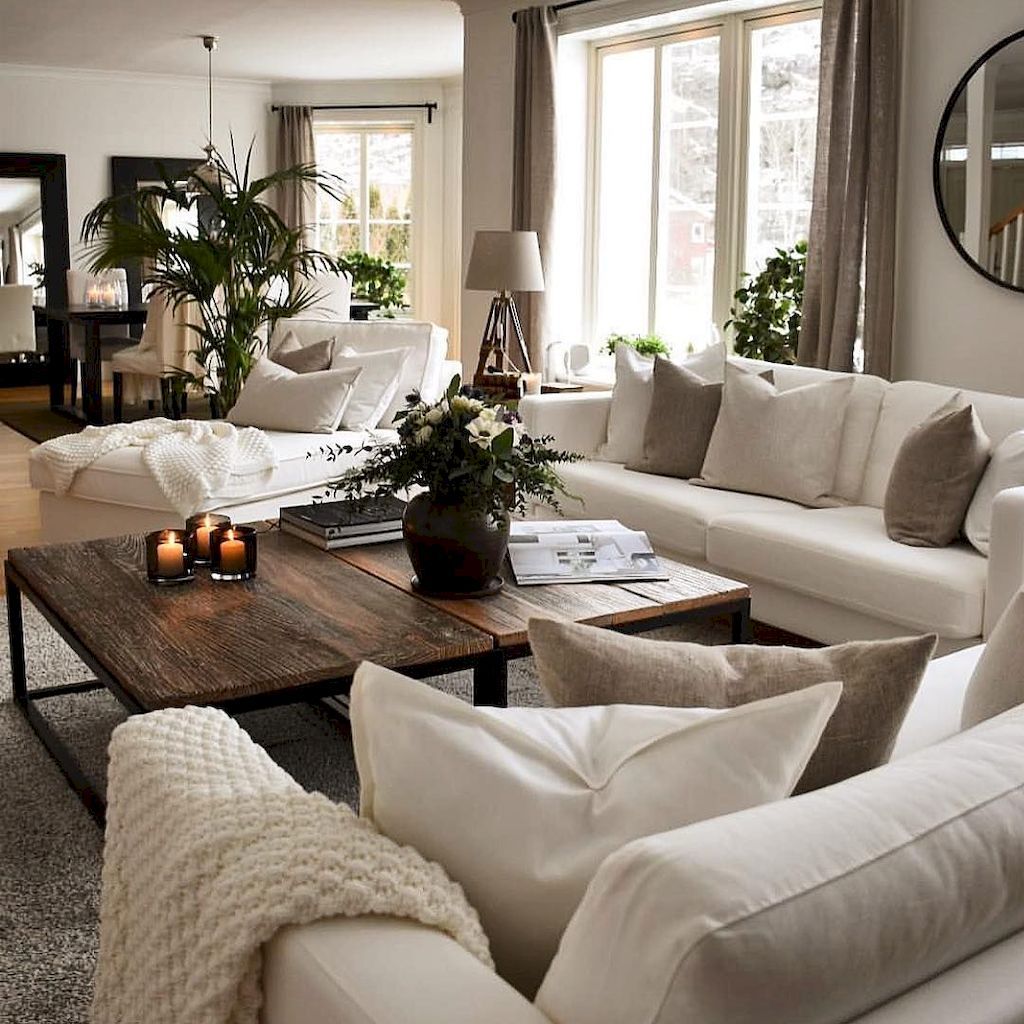
A neutral color scheme that accentuates a sense of space and light can be used very effectively in a room with large windows and generous proportions, and is therefore highly suitable for a living room, usually the largest area in the average house. The spaciousness can be exaggerated by creating a visual extension of the horizontal and vertical planes.
One simple way of achieving this by introducing stripes from ceiling to floor. Plains banners of inexpensive cloth, such as calico, stapled or battened at ceiling height at regular intervals along a bare wall, make both a lineal and textural addition to the room. Alternatively, broad stripes painted in a subtle variation of the leading wall color would have the same optical result, but without the change of texture.
Effective neutral color combinations for the living room should maintain the decorative flow. For example, use shades of soft brown and beige together, with darker shades of the same colors emphasis. Alternatively, define the contrast between the ultimate, absolute neutrals of black and white, for drama. Mix the textured tones found in tobacco, ecru, and oatmeal matte surfaces and materials to promote a sense of harmony.
The neutral living room is greatly enhanced by the clever use of variety in ornament and texture. It is likely that this room will contain more decorative object than any other, and neutral surroundings make a great backdrop for them. Ornamental details are very useful when a change of textural emphasis is needed, as they add interest to the scheme using a medium other than color.
Place textured elements in juxtaposition to their natural neighbors for a tactile finish, such as the partnership of polished stone against sub linen, rough wood against devoure velvet, and wicker against muslin.
The neutral scheme should not be allowed to become blurred at the edges, losing the definition of the individual materials, which is more likely to happen in the living room than any other room due to the amount soft materials it usually contains, including sofas and armchair, cushions, throws, carper, and rugs. One way to avoid this is to use a contrasting color to define the decorative flow.
As the concept is to maintain a monochromatic effect, it would be pointless to use a true color, but black or a deep shade of brown will have a dramatic effect on maintaining form and outline. This device might be adopted to emphasize any surface plan, such as edging the curtains to define the vertical, incorporating a darker dado rail or skirting to delineate the horizontal, or edging the carpet with tape or a narrow border to highlight the flat. It is also a good idea to uses a slightly darker carpet color to prevent the scheme from floating.
A well balancing lighting plan is so important here. Not only must it be practical and aesthetic for reading, relaxing and entertaining, but it should illuminate the room in such a way that the sense of space is uninterrupted by areas of shadow, and it is essential that lighting should not corrupt the subtlety of the colors used.








































